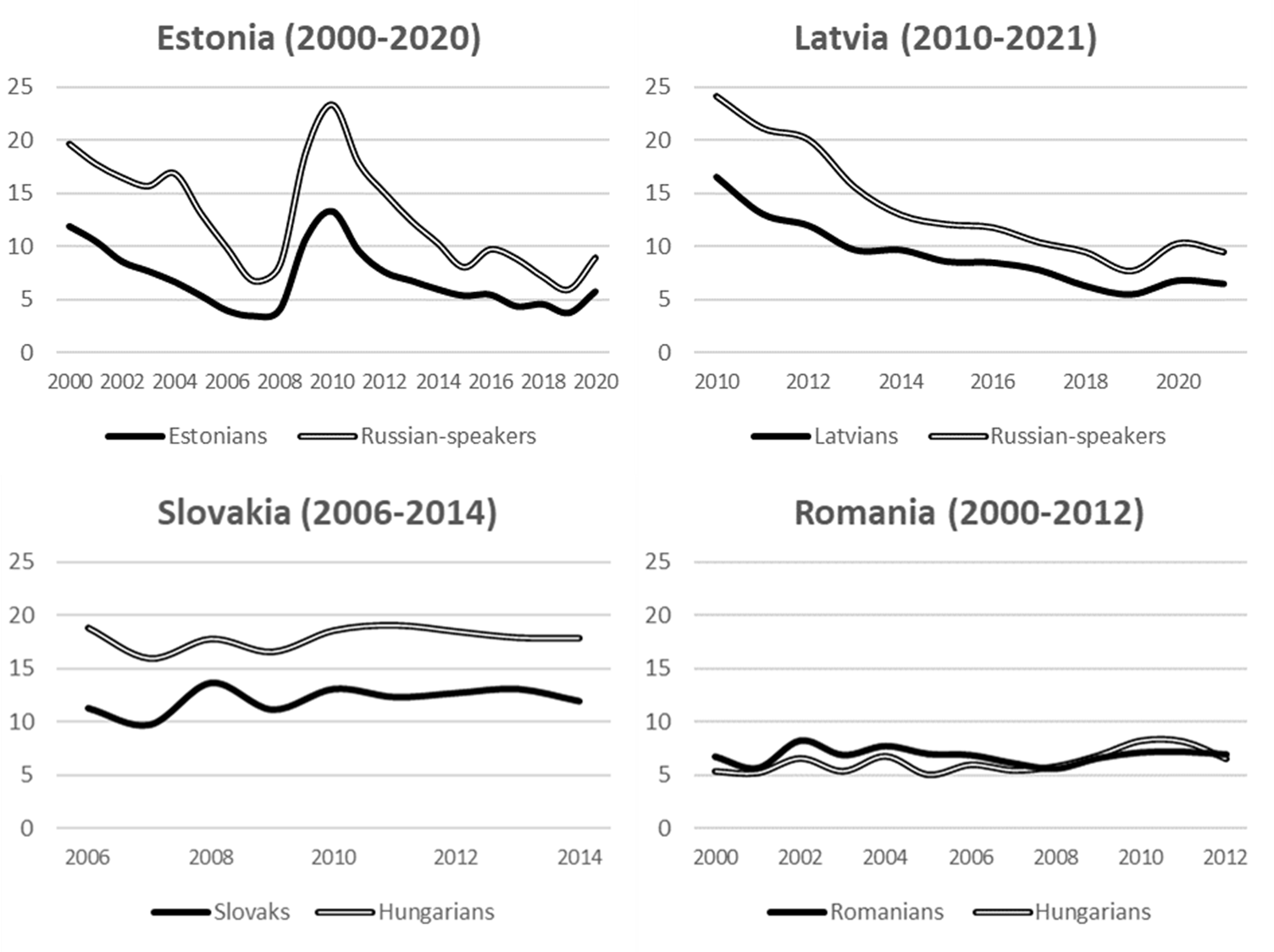Access to the labor market is essential for individuals' socioeconomic status and mobility prospects. In majoritarian states, access to and participation in the labor market is often structurally skewed in favor of the dominant nation, creating inherent disadvantages for minority members.
Unemployment rates measure
In Figure 3, we present the unemployment rates of minority groups compared to majorities in Estonia, Latvia, Slovakia, and Romania, as they appear in the Household Labor Force Survey, a leading cross-national survey in Europe. The nationality variable (referring to ethnicity) is not publicly available in standard database versions; therefore, we present data obtained through special requests addressed to national statistical offices.
Figure 3: Unemployment rates by ethnicity according to Household Labor Force Survey
